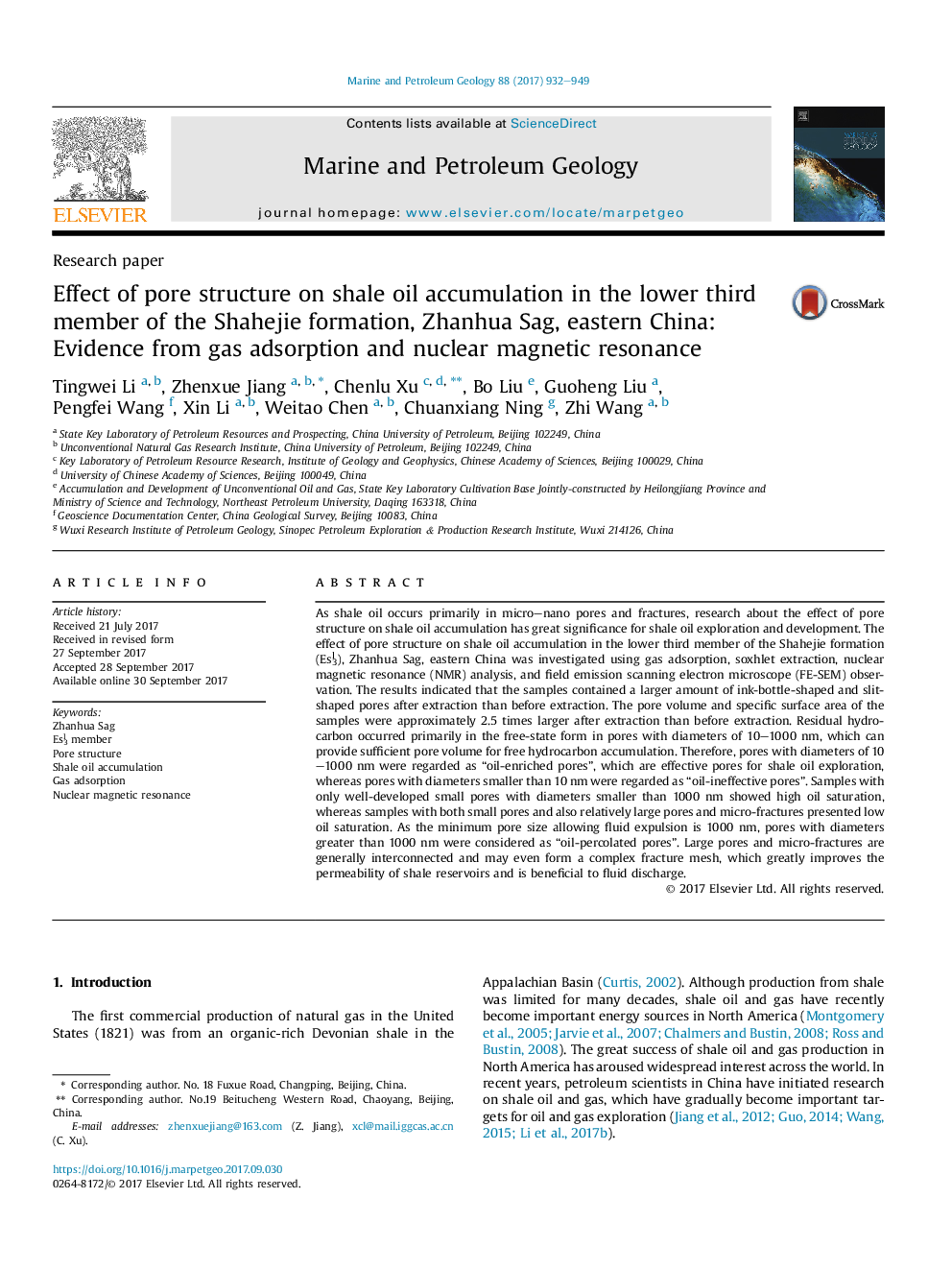| کد مقاله | کد نشریه | سال انتشار | مقاله انگلیسی | نسخه تمام متن |
|---|---|---|---|---|
| 5781947 | 1637139 | 2017 | 18 صفحه PDF | دانلود رایگان |

- As oil-ineffective pores, pores (<10Â nm) are almost meaningless for shale oil.
- As oil-enriched pores, pores (10-1000Â nm) are favourable for shale oil enrichment.
- As oil-percolated pores, pores (>1000Â nm) are propitious to shale oil discharge.
As shale oil occurs primarily in micro-nano pores and fractures, research about the effect of pore structure on shale oil accumulation has great significance for shale oil exploration and development. The effect of pore structure on shale oil accumulation in the lower third member of the Shahejie formation (Es3l), Zhanhua Sag, eastern China was investigated using gas adsorption, soxhlet extraction, nuclear magnetic resonance (NMR) analysis, and field emission scanning electron microscope (FE-SEM) observation. The results indicated that the samples contained a larger amount of ink-bottle-shaped and slit-shaped pores after extraction than before extraction. The pore volume and specific surface area of the samples were approximately 2.5 times larger after extraction than before extraction. Residual hydrocarbon occurred primarily in the free-state form in pores with diameters of 10-1000Â nm, which can provide sufficient pore volume for free hydrocarbon accumulation. Therefore, pores with diameters of 10-1000Â nm were regarded as “oil-enriched pores”, which are effective pores for shale oil exploration, whereas pores with diameters smaller than 10Â nm were regarded as “oil-ineffective pores”. Samples with only well-developed small pores with diameters smaller than 1000Â nm showed high oil saturation, whereas samples with both small pores and also relatively large pores and micro-fractures presented low oil saturation. As the minimum pore size allowing fluid expulsion is 1000Â nm, pores with diameters greater than 1000Â nm were considered as “oil-percolated pores”. Large pores and micro-fractures are generally interconnected and may even form a complex fracture mesh, which greatly improves the permeability of shale reservoirs and is beneficial to fluid discharge.
Journal: Marine and Petroleum Geology - Volume 88, December 2017, Pages 932-949